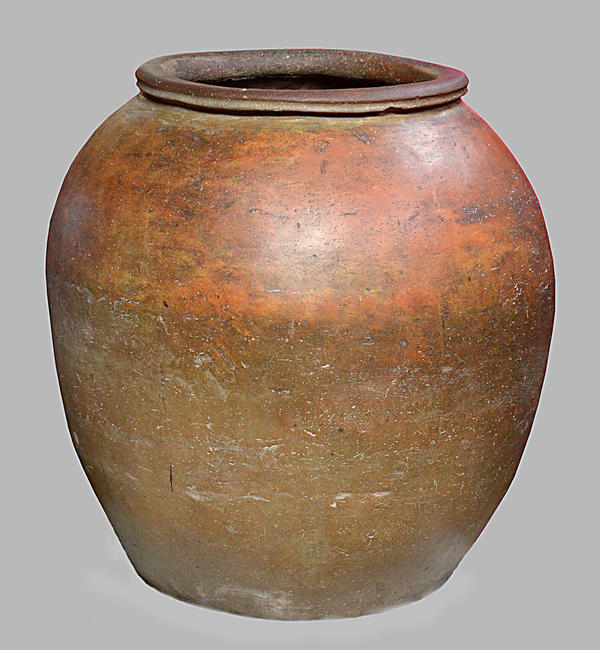The exhibition ‘Rarities of the Saratov Regional Museum’ includes a large earthenware vessel. The vessel is fashioned from red clay and corresponds with the Golden Horde period (13th-14th century). In the archaeological world, these vessels are called ‘Khums’, which came to the West from Central Asia. This Khum was given to the museum by the Saratov Scientific Archival Commission in 1903. The object was found in one of the steppe’s burial mounds near Sarepta. This former German settlement now sits within Volgograd’s city boundaries. The museum and commission’s staff were struck by the khum’s dimensions. It stands over a meter tall with a diameter at the top of 60 centimeters. A fully-grown adult could easily fit in it. It was not easy to create such a large vessel at that time. Khums were made in two ways: either using a pottery wheel or by forming it around a mold. Khums were used to store supplies. Often the bottom two-thirds of the khum was buried in the ground, which maintained a lower temperature within the vessel. This allowed perishable goods to be preserved for a while. Moreover, wheat, millet, flour and other dry goods, stored in a sealed khum were inaccessible to rodents.
This vessel has a small Arabic inscription. It is found towards the top of khum, next to the rim. According to a translation provided by Saratov Islamic Parish’s cleric, the inscription reads as follows: ‘They won’t say that you are proud.’ According to an Arabic tradition, domestic utensils were often inscribed with holy words and for a long time, there was no doubt about the veracity of this translation. However, it later became know that fragments of large thick-walled vessels with similar inscriptions were found at a number of Golden Horde settlements. The motto was inscribed onto the khum before the clay was fired. Judging by the impression, the printing block had a deep relief of at least two millimeters). This is evidence that a special stamping block was produced earlier and served as a sort of trade mark or factory mark. Following this discovery, a new translation was made of the inscription. The text contains the Armenian name of pottery workshop’s manager or owner. The inscription therefore most likely now translates as: ‘Anand, son of Sarkis’.
This vessel has a small Arabic inscription. It is found towards the top of khum, next to the rim. According to a translation provided by Saratov Islamic Parish’s cleric, the inscription reads as follows: ‘They won’t say that you are proud.’ According to an Arabic tradition, domestic utensils were often inscribed with holy words and for a long time, there was no doubt about the veracity of this translation. However, it later became know that fragments of large thick-walled vessels with similar inscriptions were found at a number of Golden Horde settlements. The motto was inscribed onto the khum before the clay was fired. Judging by the impression, the printing block had a deep relief of at least two millimeters). This is evidence that a special stamping block was produced earlier and served as a sort of trade mark or factory mark. Following this discovery, a new translation was made of the inscription. The text contains the Armenian name of pottery workshop’s manager or owner. The inscription therefore most likely now translates as: ‘Anand, son of Sarkis’.


